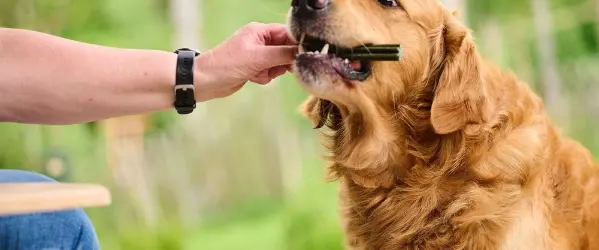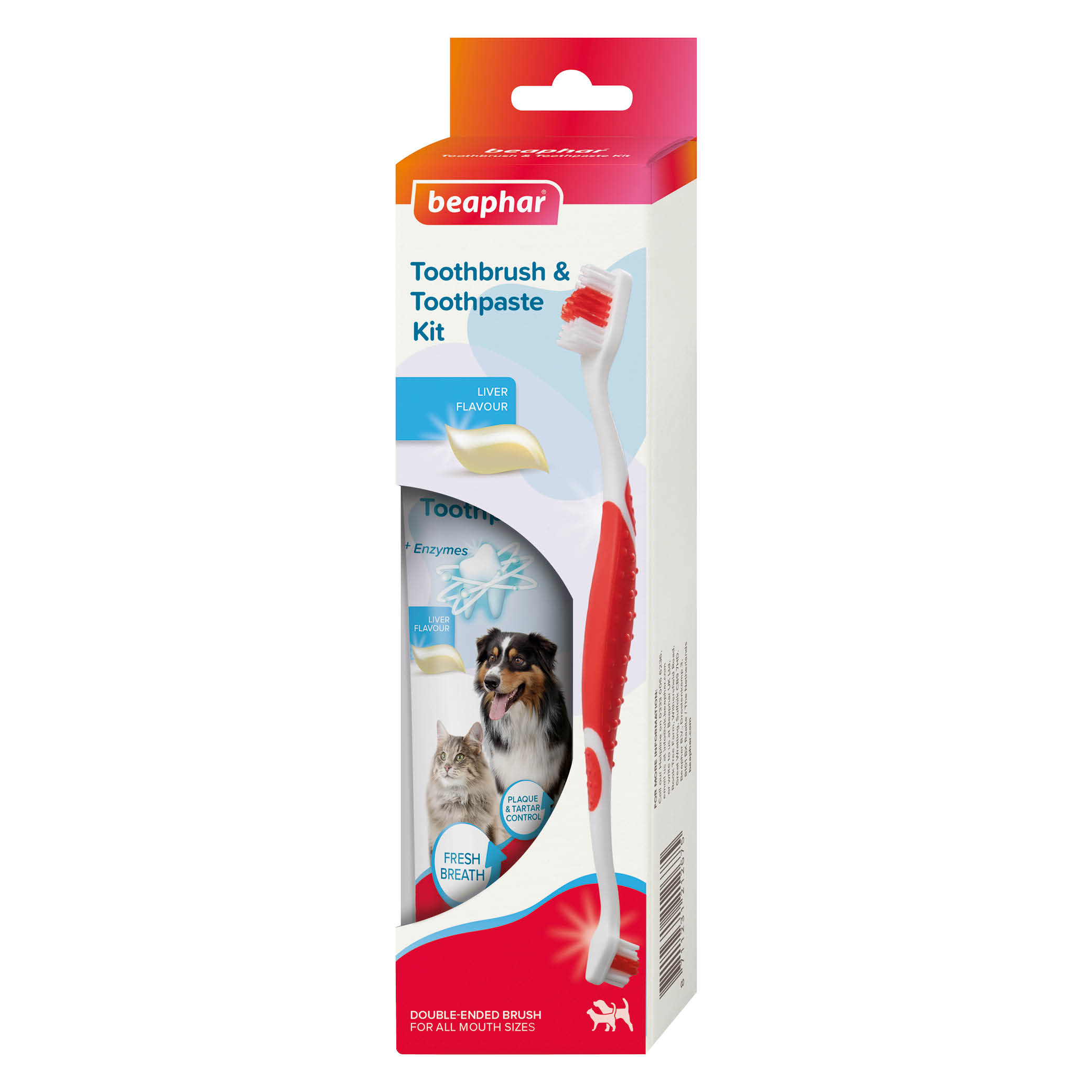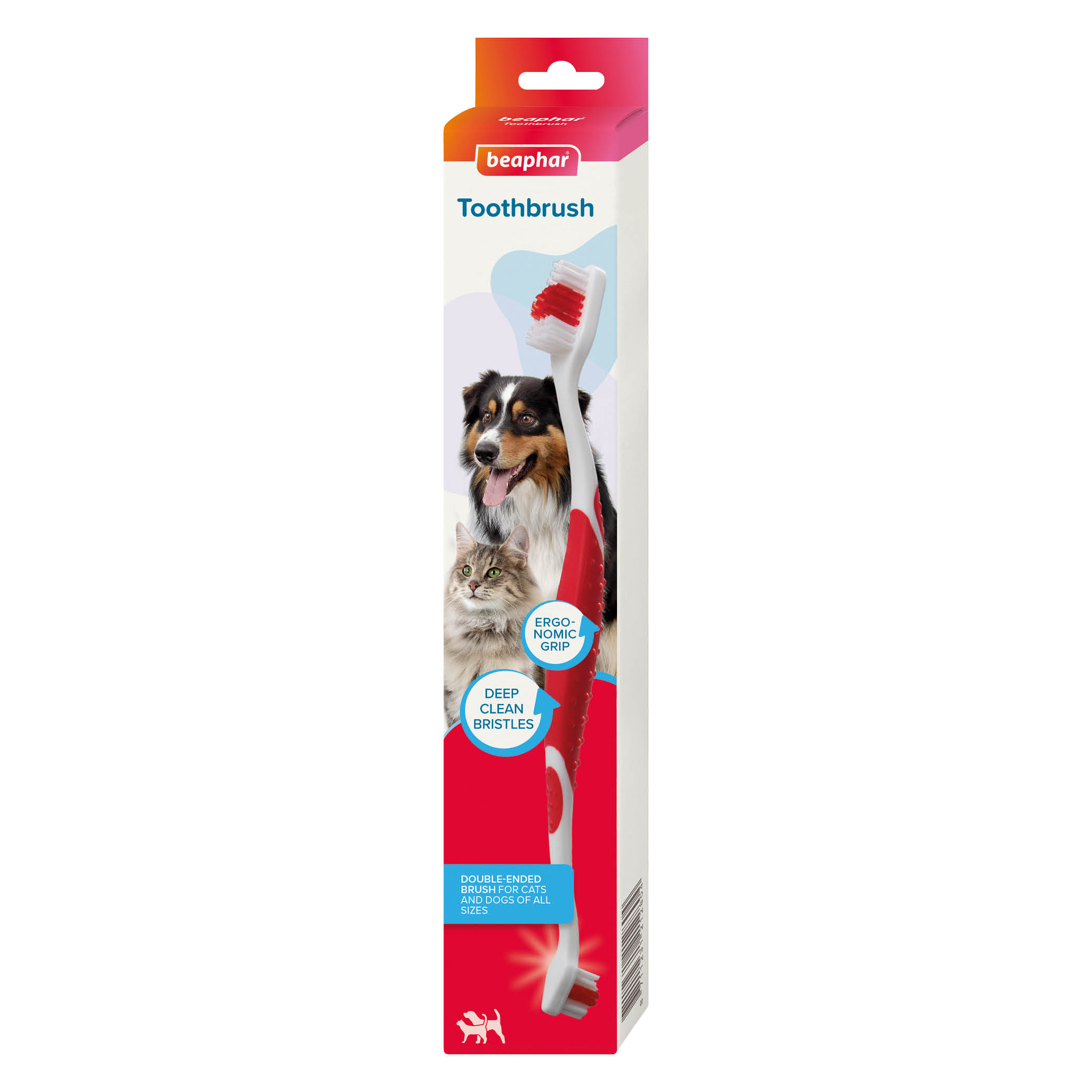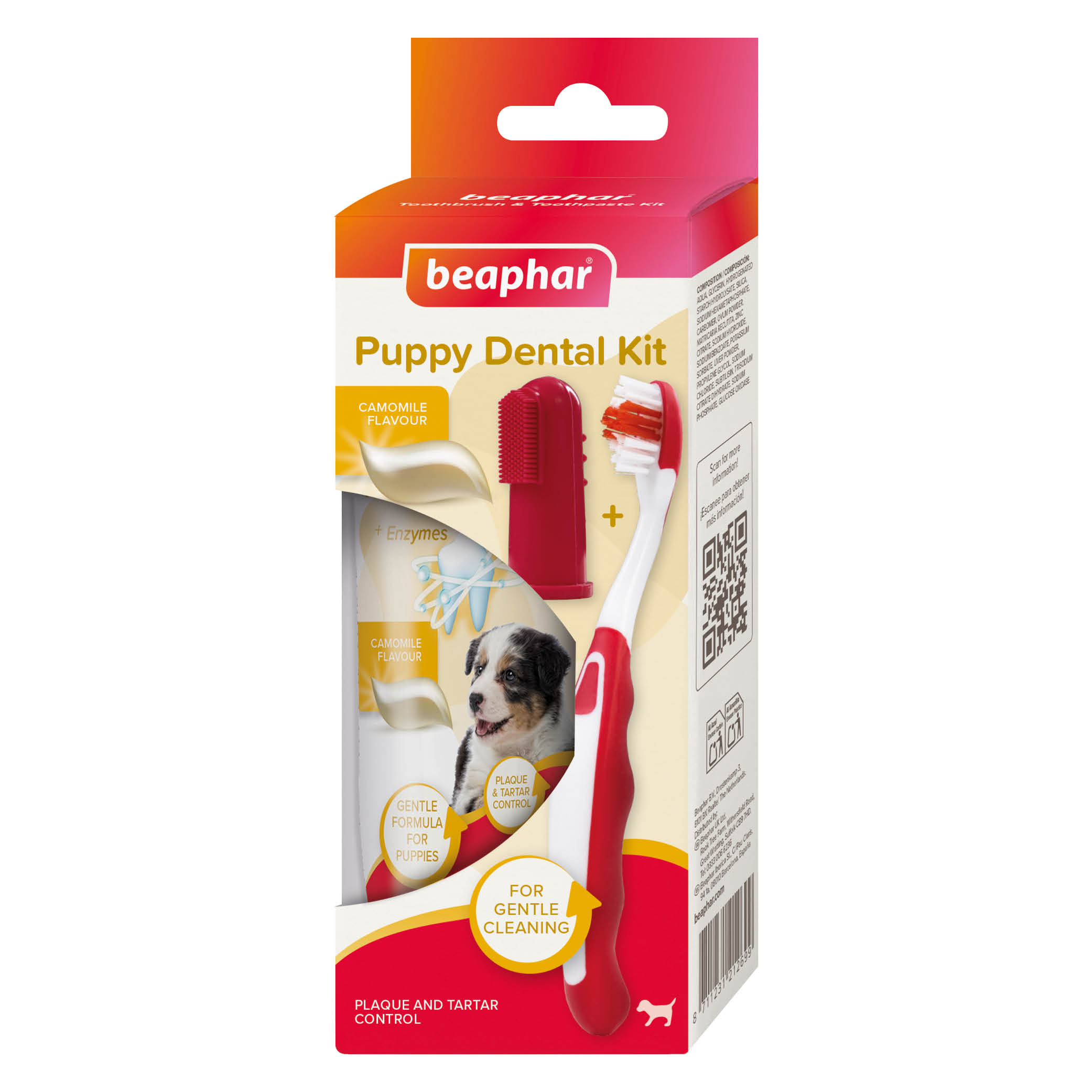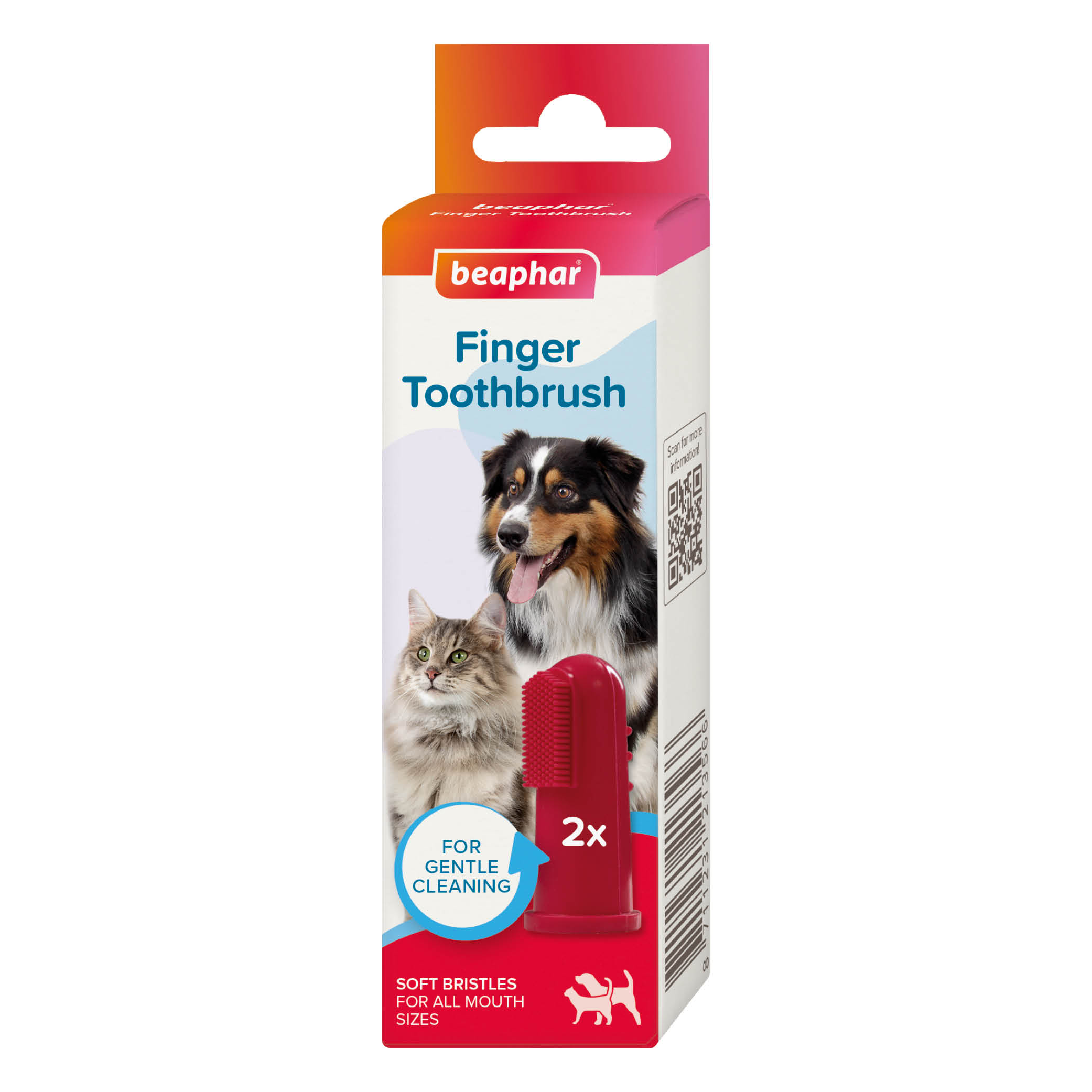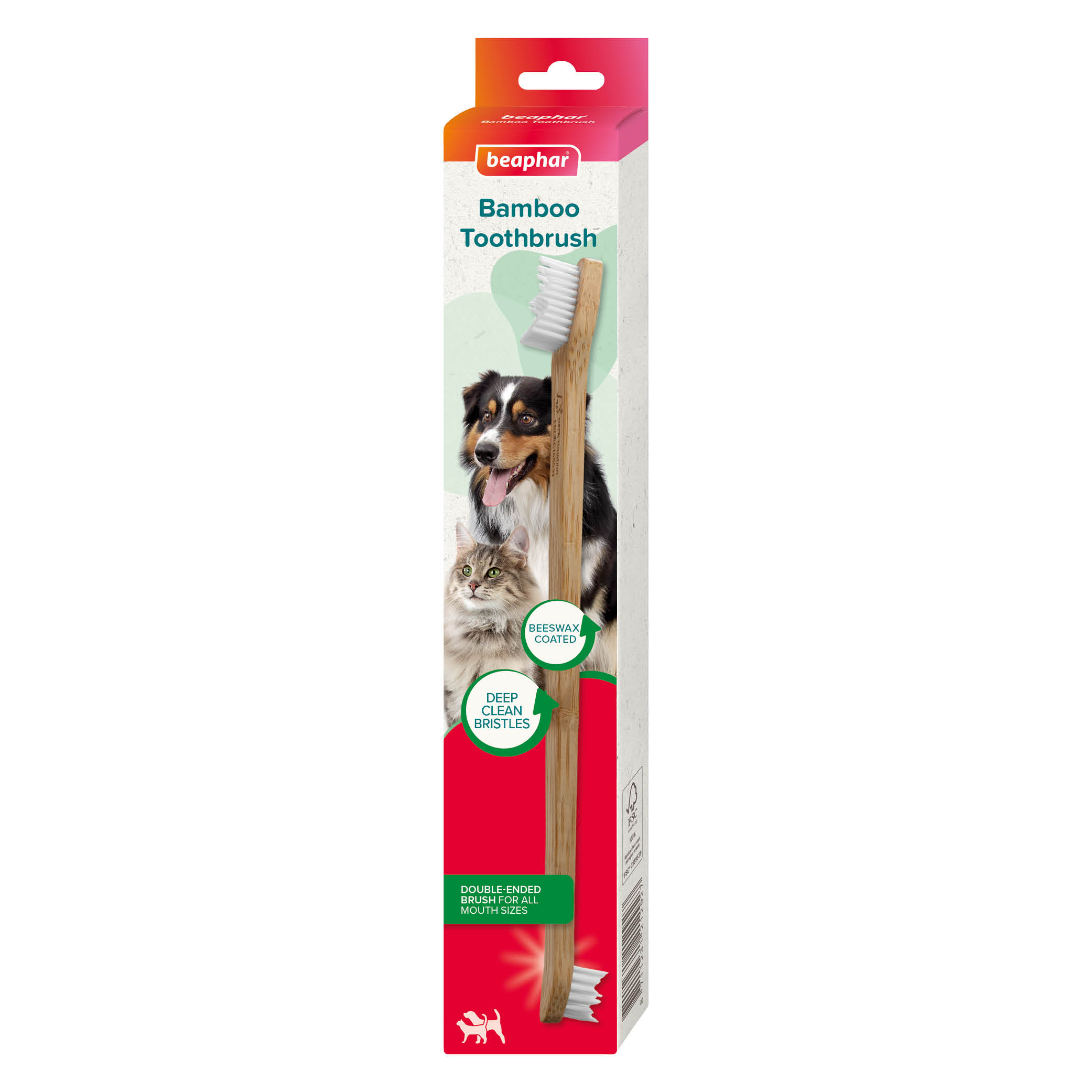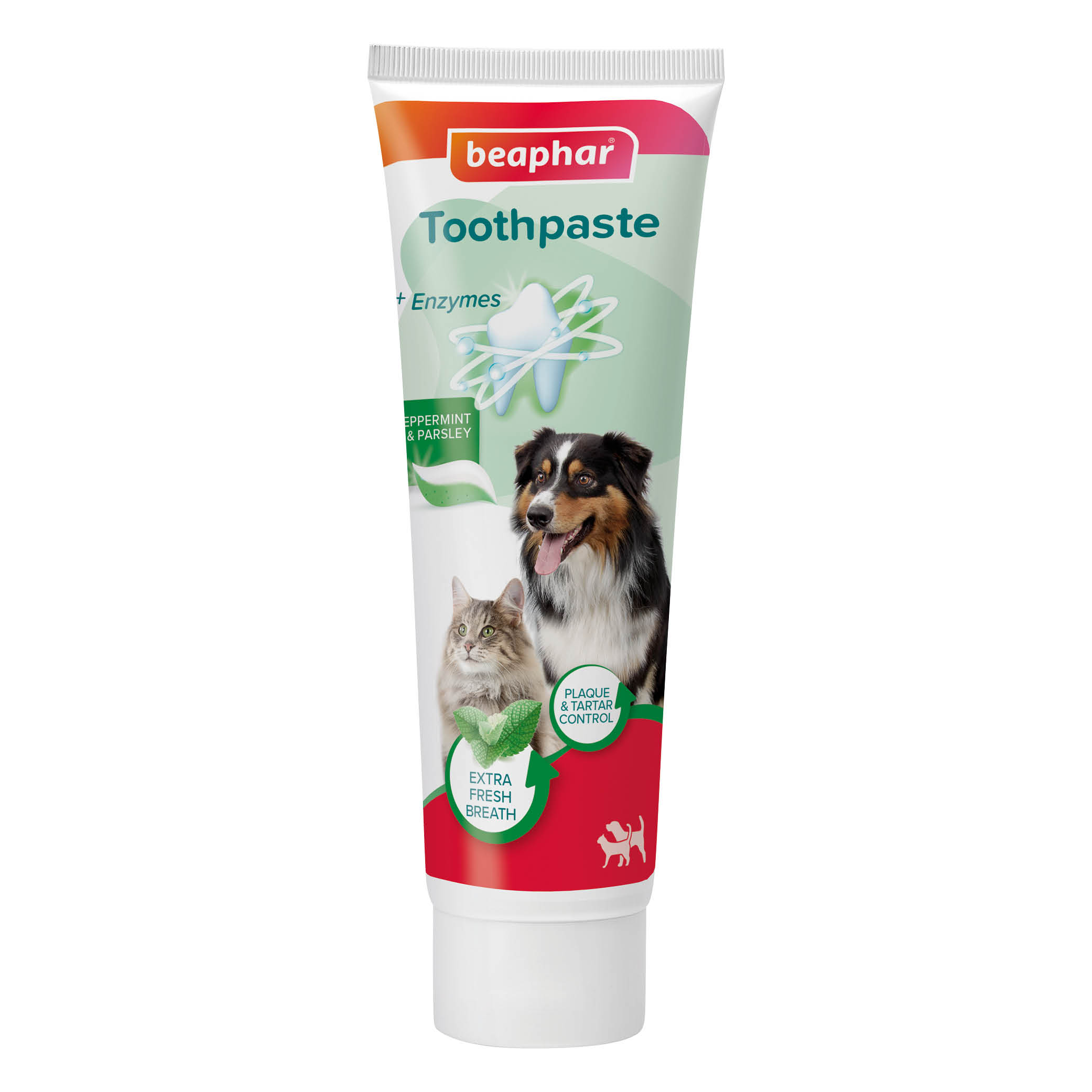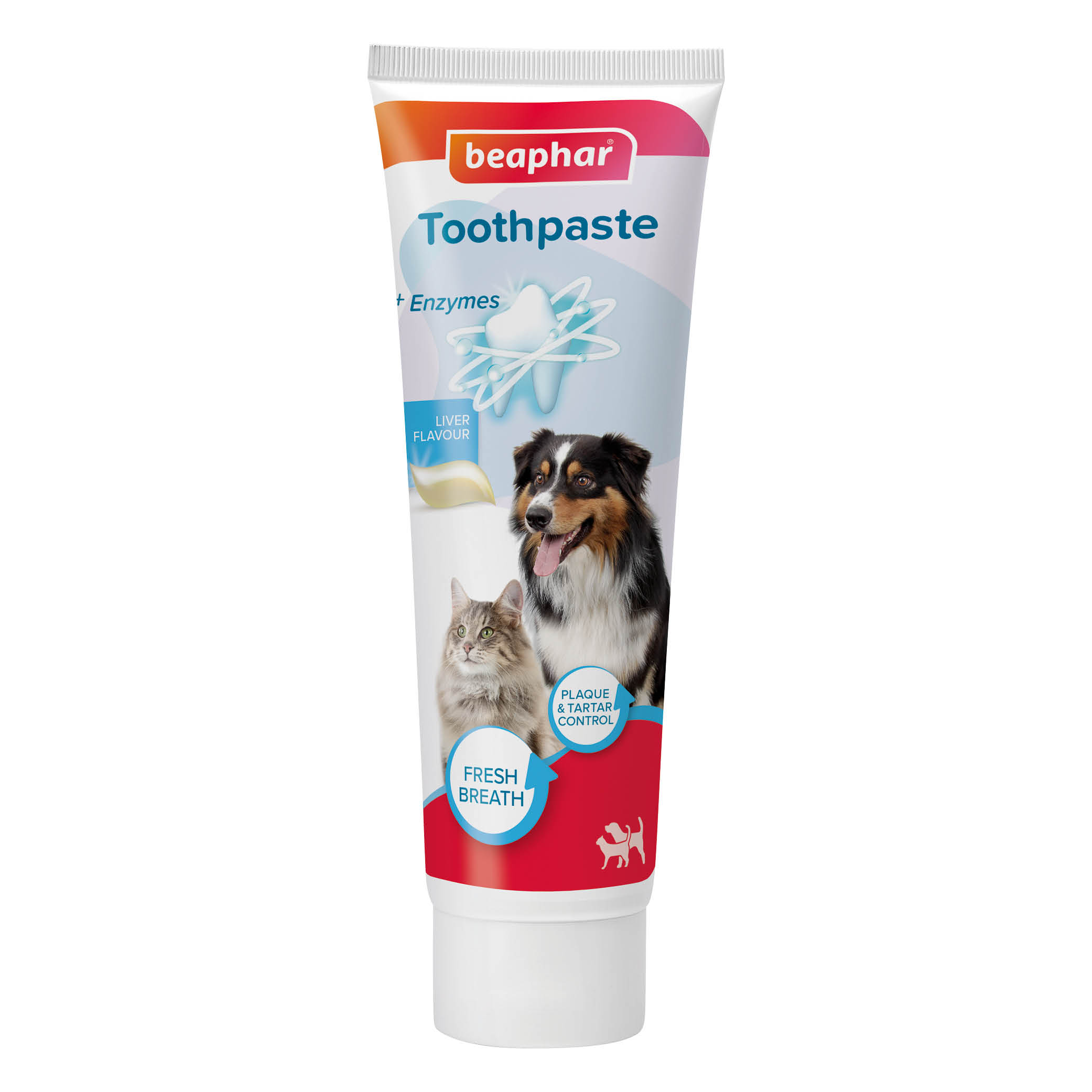Dental care in cats and dogs
Just like us, our cats and dogs need dental care to keep them healthy. Regularly cleaning your pet’s teeth can help keep them strong and healthy. It will also help reduce the need for veterinary treatment, which can be expensive for you and stressful for your pet.
Why is dental care so important for cats and dogs?
Our cats and dogs use their mouths for all sorts of things. Although our pets are now domesticated, as natural carnivores, their teeth and dental structure remain similar to their wild ancestors.
- Canine teeth – traditionally for catching and holding prey, and for pets, for holding balls and other toys
- Incisor teeth – for tearing meat from bones, and during grooming to remove debris and parasites from their coat
- Pre molars and molar teeth – for chewing and breaking down food before digestion
Because our cats and dogs use their teeth for so much more than just eating, their mouths come into contact with all sorts. To make sure that disease and infection doesn’t occur, it’s extremely important that we provide our pets with a good dental hygiene routine.
To give our pets the correct dental care, you need to know more about the signs of dental problems to look out, how to check your pet’s teeth, and the dental products available for cats and dogs.
Signs of dental problems in cats and dogs
If your pet is suffering from dental problems, there are both clinical signs and behavioural signs you may notice.
- Halitosis (bad breath)
- Calculus (tartar)
- Red, swollen and/or bleeding gums
- Loose teeth
- Dribbling or saliva stains around mouth or front legs
- Changes in eating and/or grooming habits
- Reluctance or aggression when being handled, particularly around the mouth
Our pets often hide the fact that something is bothering them, so you’re more likely to spot the clinical signs of a dental problem if you regularly give your cat or dog’s teeth a dental check-up. If you don’t regularly check your pet’s teeth, then a behavioural sign may be the first indicator that your pet is suffering from a dental problem. Depending on the severity and specific dental problem, your pet could be in a great deal of pain, causing a normally happy and friendly pet to withdraw and become aggressive.
Read more: Signs of Dental Problems in Cats and Dogs
What causes dental problems in cats and dogs?
Some breeds of cats and dogs, such as greyhounds and Yorkshire terriers, have a predisposition towards dental problems. But, that doesn’t mean we can’t help prevent them occurring. For most pets the main causes of dental problems in cats and dogs are:
- Lack of a regular dental hygiene regime
- Feeding an inappropriate diet
While dry food encourages mechanical cleaning as your pet chews, wet food (due to its moist consistency) often becomes stuck in or around the teeth. Feeding human food or tidbits from the table also get stuck in cat’s and dog’s teeth, increasing the risk of dental problems occurring.
Dental problems that may occur in cats and dogs are:
- Plaque on dog's teeth - plaque is made up of a soft layer of bacteria and sugars from food and saliva
- Plaque: Plaque (pictured) is a common problem that affects cats and dogs. Plaque accumulates on the tooth’s surface. It consists of a soft layer of bacteria, and sugars which accumulate from saliva and food.
- Tartar: Tartar occurs if plaque is not removed, calcifying into a hard layer on the tooth. Anywhere plaque forms has the potential to develop tartar. Tartar cannot be removed at home; if your pet develops tartar build-up you will need to consult your veterinary surgeon.
- Gingivitis: This is the first stage of developing periodontal disease, but can usually be reversed at home with good dental care. Gingivitis first presents as redness around the gum line, and bleeding can occur during brushing or eating. If you notice bleeding when brushing your cat or dog’s teeth, don’t be put off. Continue the dental care, but seek veterinary advice if you feel the bleeding is getting worse or not improving with frequent brushing.
- Periodontal disease: This a serious dental problem and if left untreated, your pet is at risk of tooth loss, bone loss in their jaw and secondary health problems. The first stage is gingivitis, but if left untreated bacteria can spread into the bone and ligaments that support the teeth, causing irreversible damage.
- Tumours or growths: Although uncommon, knowing what is and isn't normal in your pet's mouth will help you to quickly identify if there is an abnormal growth.
- Stomatitis: Stomatitis is the inflammation of the mucous lining the mouth, which is often painful. Signs include severe redness and swelling, and ulcers on the lips, tongue, gums and at the back of the throat. In cats there is not one specific cause, but stomatitis is commonly a symptom of a bacterial or viral infection. In dogs, it is frequently caused by an allergic reaction and poor dental hygiene.
Some dental problems, like plaque and gingivitis, can be reversed at home by cleaning your pet’s teeth. But other, more serious dental problems, like tartar and periodontal disease, need to be treated by a veterinary professional.
Receiving dental care from a vet can be costly, with some treatments not being covered by pet insurance. The best way to avoid dental problems (and the potential vet bills that come it), is to develop and follow a regular dental routine for your pet and feeding them the correct diet.
How can I keep my pet’s teeth healthy?
The best way to keep your pet’s teeth healthy is daily tooth brushing, just like it is for us. While daily dental care is considered the ‘gold standard’, giving your pet’s teeth a thorough clean 2–3 times a week will go a long way to improving their overall oral health.
Alongside cleaning your pet’s teeth, it’s a good idea to give your pet a dental check-up. This allows your pet to get used to having their mouth and teeth touched, but also means you’re more likely to notice a dental problem sooner rather than later.
How to give your pet a dental check-up
Healthy cat and dog teeth are white and shiny, and there is no bad breath or redness on the gums.
To give your pet a dental check-up, gently lift their lips and look for any discolouration or reddening of the gums. You can also run your finger along their teeth and gum line, feeling for any lumps.
Remember, you can’t see plaque without a disclosing solution. Even if your pet’s teeth look clean there could still be plaque build-up that needs to be removed with a dental care product.
Healthy teeth will be shiny and cream/white in colour, with no rough patches on the surface. The gums will be pink, and there will be no bad breath.
Can I use human toothpaste to clean my pet’s teeth?
When cleaning your pet’s teeth you must use a toothpaste specifically designed for cats and dogs. Most human toothpastes contain fluoride which is toxic to animals and can result in serious health problems, as well as a foaming agent which will irritate your pet’s stomach if swallowed.
What dental care products should I use to clean my pet’s teeth?
Pet dental products containing enzymes, such as protease, glucose oxidase and glucoamylase, are highly effective There are many dental care products on the market specifically tailored to keep our cats and dogs teeth strong and healthy. When choosing a dental care product, we recommend choosing one containing key enzymes. Enzymes play an important role in dental care, helping reduce plaque, fight bacteria and reduce tartar build-up, even in products that don’t require brushing. Three key enzymes you should look out for when choosing a dental care product for your cat or dog are:
- Protease
- Glucose oxidase
- Glucoamylase
These enzymes are highly effective, even in no-brush dental products, helping to support your pet’s oral health.
Beaphar Toothpaste has a tasty liver flavour, and contains both protease and glucose oxidase enzymes to fight bad bacteria and prevent plaque formation, as well as polishing agents and zinc to help strengthen teeth. It is available individually, or as part of a dental kit with the Beaphar Toothbrush, which is double-ended with one big brush head and one small, so it can fit it in most pets’ mouths.
Also available is the Beaphar Puppy Dental Kit, ideal for kittens and puppies who are just beginning their dental care routine, and the Beaphar Finger Toothbrush, which is excellent for introducing your cat or dog to tooth brushing.
Watch our video below or check out our step-by-step guide to introduce your pet to tooth brushing.
Can I support my pet’s dental health without brushing their teeth?
While brushing is considered best practice, there are no-brush dental products that can support your pet’s dental health just as effectively. Beaphar has a wide range of no-brush dental care products, including functional dental treats, products that can be added to food or drink, a gel and spray.
These products are also ideal to use in combination with tooth brushing. If you’re brushing your pet’s teeth 2–3 times per week, a no-brush dental product is ideal to use on the days you don’t brush to provide additional dental support.


